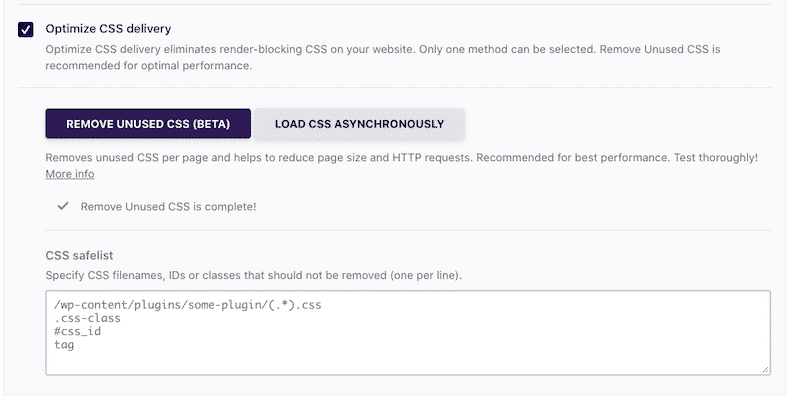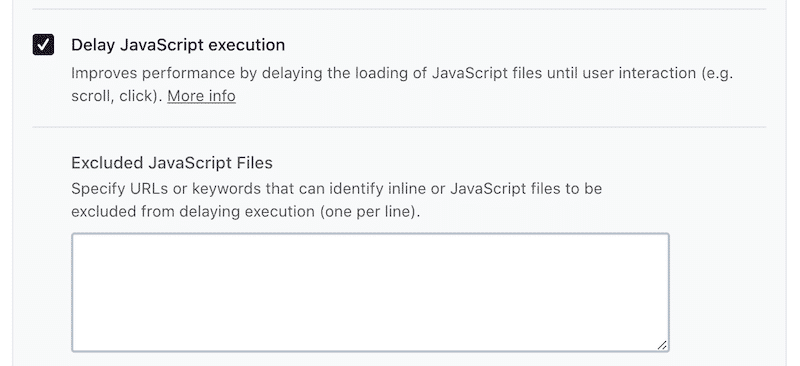Table of Contents
Last update on
Trying to choose between Divi vs Avada to build your WordPress site?
These two themes are two of the most popular premium WordPress themes of all time – Elegant Themes (Divi’s developer) claims to have over 806,000 customers, and Avada has been purchased over 747,000+ times at ThemeForest. Those are both incredibly impressive numbers and proof that each theme has a lot of happy users.
One of the biggest factors behind both themes’ success is their bundled visual, drag-and-drop builders. With these builders, you can create beautiful custom WordPress sites – no code required.
But design flexibility isn’t the only thing to consider in a WordPress theme – you also need to weigh how quickly that theme will help your website load because website load times play a role in everything from user experience to SEO, conversion rates, and more.
This is even more true since Google’s Page Experience update, where Google started factoring Core Web Vitals into its rankings.
To that end, we decided to create a Divi vs Avada comparison focused on one specific metric: performance.
That is, does Divi or Avada help you get a faster loading website? To answer that question, we ran some tests of our own – keep reading to see the data and analysis.
Note – we originally published this post and ran these tests in July 2021. However, Elegant Themes released an update with major frontend performance updates in August 2021 (Divi 4.10) that makes a huge difference to Divi’s performance. For that reason, we completely reran these tests and collected all new data and conclusions in November 2021.
How We’ll Test Divi vs Avada Theme Performance
Before we get to the data, let’s talk about how we’re going to test Divi vs Avada performance so that you know exactly how we set things up.
First off, we’re going to test two high-level scenarios:
- Test #1 – we’ll test just the themes. That is, we won’t use their bundled visual builders. Instead, we’ll just test the default “Sample Page” built with the block editor.
- Test #2 – we’ll test a simple page built with each theme’s builder, as the visual builders are a key part of what makes Divi and Avada so popular. We’ll try to use comparable modules to make the comparison as equal as possible.
For each high-level test scenario, we’ll also test two different setups:
- The first setup is just with the themes themselves and no other performance optimizations.
- The second setup is with WP Rocket installed and configured so that you can see how things look if you implement WordPress performance best practices.
In addition to page caching and other basic best practices, WP Rocket also offers some unique features that can optimize each theme’s code and improve Core Web Vitals metrics.
- Remove unused CSS – this lets you remove unnecessary CSS from your site on a page-by-page basis. It can be especially great at cutting down the page size of themes like Divi and Avada.

- Delay JavaScript execution – this lets you wait to execute JavaScript until a user interaction, which does a great job of speeding up initial load time. You can always manually exclude certain scripts if you need them to load immediately.

Our test sites are hosted on a cheap $5 per month DigitalOcean droplet powered by RunCloud and an all-Nginx stack. We didn’t make any performance improvements beyond adding WP Rocket in some of the tests, as noted above.
To test and measure the WordPress performance data, we’ll use WebPageTest to collect mobile-focused performance data:
- Test device – iPhone 8. More modern devices will have stronger processors to process JavaScript more quickly, which could lead to slightly faster load times. It could be the opposite with older/lower-powered devices.
- Connection Speed – throttled LTE connection (12 Mbps, 70 ms RTT). Real-world load times would be faster if a visitor is browsing on Wifi or slower if the user has something like a 3G connection.
For each test, we’ll have WebPageTest run nine separate tests and take the median value. This helps us avoid single-test variability and get more consistent results.
Here are the four metrics that we’ll focus on:
- Largest Contentful Paint (LCP) – part of Google’s new Core Web Vitals metrics and an SEO ranking factor in the Page Experience update.
- Time to first byte (TTFB) – this measures how quickly the server is able to respond with the first byte of data after processing the site/theme’s PHP (or delivering from the cache, in the case of our WP Rocket test).
- Page Size – all else equal, a smaller page size is always better.
- HTTP requests – all else equal, fewer HTTP requests are always better.
Finally, here are the version numbers for everything that we’re testing:
- Avada theme – 7.5
- Avada Builder – 3.5
- Divi theme – 4.13.1
- WP Rocket – 3.10.3.
Divi vs Avada Speed Tests
Now, let’s get to our hands-on Divi vs Avada performance tests.
Test #1: Just the Themes
In this first test, we’re testing just the themes without using the visual builders:
- Divi – just the Divi theme as Divi already bundles in the Divi Builder.
- Avada – we also installed the Avada Core and Avada Builder plugins as these are core required plugins. We didn’t install any optional plugins, though.
The actual content is the “Sample Page” that comes with a fresh WordPress installation. It’s built with the native block editor.
Here’s the data for the themes by themselves:
| LCP | TTFB | HTTP Requests | File Size | |
| Divi | 1.011 s | 0.408 s | 14 | 201 KB |
| Avada | 1.517 s | 0.448 s | 16 | 544 KB |
You can see that Divi is the pretty clear winner here when it comes to Largest Contentful Paint time as Avada’s time is 50% higher.
Why the difference?
Well, we’re going to guess that a big part of Divi’s faster performance is the fact that Avada’s page size is 544 KB while Divi’s is just 201 KB. Keep in mind that this is for a page that’s not built using the visual builder – this is just the default sample page built with the block editor.
Now, let’s look at the data after adding WP Rocket:
| LCP | TTFB | HTTP Requests | File Size | |
| Divi + WP Rocket 🚀 | 0.384 s | 0.273 s | 9 | 92 KB |
| Avada + WP Rocket 🚀 | 0.444 s | 0.247 s | 12 | 325 KB |
You can see that, with WP Rocket’s optimizations, both themes are much faster and there’s very little difference in Largest Contentful Paint time between Divi vs Avada. Divi is still slightly faster, but the difference is small enough that it could just be normal test variability.
What’s more, WP Rocket was able to greatly reduce the page size of both themes thanks to the features to remove unused CSS and delay JavaScript execution. You can see that Divi’s page size dropped by more than half while Avada’s page size was reduced by more than 200 KB.
These improvements, along with caching and other tweaks, are what caused the improved LCP times.
Test #2: With Builders
In this second test, we used each theme’s visual builder to create a comparable page using roughly the same modules. The design is very simple – we only added three elements to keep things as equal as possible:
- Text editor with identical lorem ipsum content
- Button
- Counter circle
The idea here is mainly to see what extra “weight” gets added to the page when you activate each theme’s builder.
Here’s the data for just the themes/builders by themselves:
| LCP | TTFB | HTTP Requests | File Size | |
| Divi | 0.899 s | 0.341 s | 14 | 205 KB |
| Avada | 1.394 s | 0.418 s | 15 | 508 KB |
Overall, you can see that the results are pretty much the same as above. Divi is noticeably smaller in terms of page size and, as a result, has a faster Largest Contentful Paint time.
What’s more, neither theme adds any extra weight to the page just because you’ve activated the visual builder, which means there’s not really any penalty for using the builder over the native editor (at least for simple pages).
Here’s the data after adding WP Rocket:
| LCP | TTFB | HTTP Requests | File Size | |
| Divi + WP Rocket 🚀 | 0.399 s | 0.260 s | 9 | 92 KB |
| Avada + WP Rocket 🚀 | 0.466 s | 0.259 s | 11 | 296 KB |
With WP Rocket, you can see the same result as the first test. Now, Divi and Avada’s Largest Contentful Paint times are much faster and similar in performance, though Divi is again a little faster. Beyond greatly reducing the Largest Contentful Paint time, WP Rocket was also able to achieve similar reductions to the file size as in the first test.
Final Thoughts on Divi vs Avada Performance
Divi and Avada are similar in that both give you the power to build a custom website using their visual drag-and-drop builders.
However, while they both give you that control, Divi is now notably faster in terms of out-of-the-box performance.
The difference was small when we first ran our Divi vs Avada performance tests. However, after the Divi 4.10 performance update in August 2021, Divi is now much smaller than Avada by default, which leads to Divi’s out-of-the-box Largest Contentful Paint times being about two-thirds of Avada’s.
However, if you use WP Rocket with its caching and the new features to remove unused CSS and delay JavaScript execution, you can make large improvements to both themes.
While Divi was still slightly faster with WP Rocket enabled, the difference was much more minimal and Avada still performed fine.
This suggests that, while Divi is a bit faster, you can still create a quick-loading site with Avada as long as you implement WordPress performance best practices with a tool like WP Rocket.
Of course, these two themes aren’t your only two options. If you’re focused on speed and performance, you might want to check out our collections of the fastest free WordPress themes or the fastest WooCommerce themes if you’re building an eCommerce store.
You can find even faster themes than these two, including the Astra theme, which performed well in our Divi vs Astra performance comparison (though the difference isn’t as large thanks to Divi’s new performance improvements).
Do you still have any questions about Divi vs Avada when it comes to speed and performance? Ask us in the comments!



